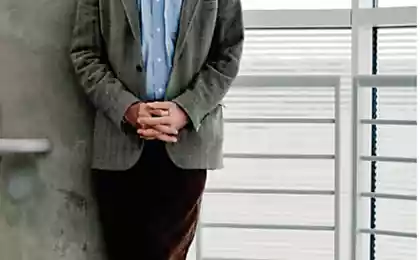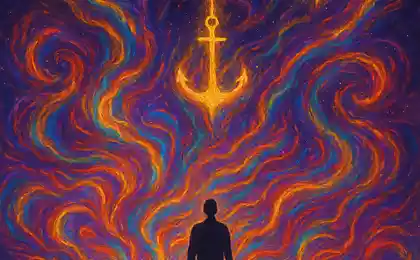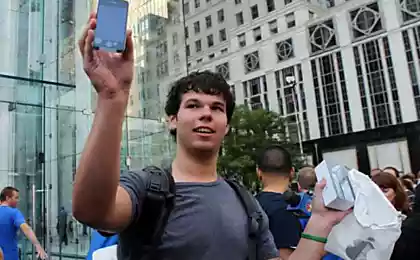981
Emotional costs: buyers make a choice

Classical theory to explain the behavior of consumers, based on the belief that the people make their choice of goods or services consciously. They weighed the options and choose the most suitable to them. The process of making purchasing decisions is divided into five stages. At first, the man realizes his need. Then he begins to look for information about using what it can satisfy. Defining products of the desired category, he begins to compare them.
Choosing the best product, he decides to buy it. The last stage - a reaction to the purchase, estimate the correct choice. This sequence may vary in different situations. For example, if re-purchase lowered intermediate links in the chain. So, if a person wants to drink, it can automatically select the brand of the drink, which he liked last time, skip the selection. With the idea that the decision-making process is completely rational, many researchers argue.
Bounded rationality
The concept of "bounded rationality" first introduced the use of a psychologist Herbert Simon. According to him, the decisions made by the people, limited information, which they own, their personal cognitive features, as well as the time during which they are to be taken. Any person simply lacks the resources and knowledge to make the best, perfectly balanced decision. Therefore, people tend to ultimately simplify the existing options to cope with the stress of choice. Bounded rationality also explains why people can go to a more expensive and inconvenient location of the store, the owner of which they are familiar, and not to buy the same products cheaper in a faceless shop near his home.
Since bounded rationality is inextricably linked the concept of information asymmetry - a situation in which the buyer has incomplete information about the product. For example, the seller may keep silent about the poor quality of the product. As shown in his works Nobel Laureate George Akerlof, a lack of awareness in the markets affecting the price level. The buyer knows that it is likely to stumble on defective goods, so as to minimize their risks he is willing to pay a smaller amount than in the case if the market were only high quality products. As a result, in the most unfavorable situation are the sellers of high-quality products, which are forced to reduce the price.
Madness choice
Economist Dan Ariely gives interesting examples of irrationality in decision-making in his book "Predictably Irrational." For example, if the travel company is offering customers a choice of three options: a trip to Paris to pay breakfast in Rome without breakfast in Rome with breakfast, it is likely they will choose a trip to Rome with a paid breakfast. This is called "the effect of the bait." Its essence is that consumers tend to be more determination to choose one of the options or similar, if they are also given to the third - is clearly different - option. In another chapter Ariely writes about irrational perception of the value of things. If the product first appears in the sale, is sufficient to establish it and to remove the exorbitant price of advertising in which he will stand in line with other expensive goods to buyers automatically classify it to things of high value. For example, there was a Tahitian black pearls.
Ariely also gives an interesting example of prices. He talks about the next study, the placebo effect. Ariely noted that therapeutic placebo effect is enhanced if patients believe that taking drugs is very expensive. Another example of the irrationality of choice - the effect of expectations, which proves that our ideas of things can obscure the true feel of them. Thus, in experiments conducted at MIT, a group of students in the sample were given two choices of beer, without explaining that one of them is added to the vinegar. Students had more to taste beer and vinegar. When this group was offered the same beer, explaining which of them contains vinegar, the results were exactly the opposite. Languages change their taste!
Bitter regret
Psychologists say that at the moment before purchase, people usually experience a strong positive emotions (desire to possess, the anticipation of pleasure and new features). After the purchase, on the contrary, they become very vulnerable and often experience a sense of remorse. The more effort, time and money spent on the purchase of a person, the greater his sense of desolation. Psychologist Barry Schwartz in his book "The Paradox of Choice" writes that the main reason for this state - the feeling of missed opportunities.
While most manufacturers believe that they must provide consumers the widest possible selection of products, in fact, they only complicate the process of selecting him. A man who must choose from 100 varieties of cheese alone, under stress from the inability to figure out all the "pros" and "cons". He could not bear the thought that his final choice cost him not two or three, and 99 missed opportunities.
Stupor of diversity
Explorer Bus Iyengar went even further: it considers that the need to choose from a variety of similar products leads to customer paralysis, in which the majority of customers do decide to withdraw from the purchase. Among other things, she conducted an experiment. The supermarket was established two trays with jam probes: one was represented by 24 option on the second - six. A lot more people stopped to try to jam where there were more options, but only 3% of them bought a result of the jam. To stand with six kinds of jam came less people, but 30% of them decided to buy it.
Iyengar gives three pieces of advice to entrepreneurs who want to avoid the problem of consumer paralysis. First, reduce the range. Paradoxically, this will make the selection process more enjoyable for customers and increase the number of sales. For example, the company came Procter & Gamble, removing nine species of their shampoo and thereby increasing the number of sales by 10%. Secondly, fleshing. Clients can not choose from a variety of options, because they do not understand what a product is different from the other. Third, divide the products into categories.
Emotional buying
American economist George Loewenstein devoted himself to the study of the influence of emotions on decision-making. As a result, he identified two types of emotions: those that a person is experiencing at the moment, and those that it requires experience in the future. The main emotion of the future - is the fear of mistakes, losses, the consequences of the decision is wrong, not a foretaste of the enjoyment of the right choice. Expressions of this influence how quickly and deliberately person decides how much risk it is willing to go. So, people are in a state of sexual excitation light, an angry or hungry, take decisions faster quiet. Happy people do not take risky decisions. Frightened and frustrated people abandon the decision at all. Therefore, for example, the seller will not sell the car if it is to talk about its security, because the buyer will make mentally to survive the accident.
Traps comparison
Do the unexpected decision to buy a thing that the buyer just seen, there are several reasons. People are more prone to impulsive purchases when they are hungry, tired, or frustrated that day have already made some decisions about the purchase. That is why the shops are placed small items like candy and gum in front of the cashier: suited to customers prepared by other, larger, shopping. Another common reason is the so-called "projective thinking." It forces the mind to believe that the present state will last in the future. For example, when it's very hot, people buy convertibles and cars do not buy black.
A sudden desire to buy also appears due to the "anchor effect". Its essence is that we tend to judge things in comparison with others of her things, and do not understand its objective value. Shops use this effect by placing the TV on a shelf at a discount between two very expensive TVs that cost Discounted items seemed more attractive. This is done in the restaurants, including the menu is very expensive wines that prices "average" wines seemed more acceptable.
One for all
Halo effect for the first time noticed the psychologist Edward Thorndike. He suggested that people tend to make their views on the general subject on the basis of one of its features. The study evaluated Thorndike officers their soldiers on their appearance. The results showed that the appearance of attractive men are automatically considered more intelligent, responsible and possess leadership qualities. Subsequently Thorndike proved as halo effect affects the bias of judges in relation to the defendants and teachers - to pupils.
One of the known examples of the halo effect is in the business of iPod. His incredible popularity significantly influenced the increase in sales of other products of Apple. In the automotive industry even has a term «halo vehicle» - is a car that is designed specifically to enhance the prestige and increase car sales across the brand as a whole. These models include the Dodge Viper and Ford GT.
Hobson's Choice
The situation in which the buyer has only one version of the product, either he chooses his or receives nothing. It is believed that this expression appeared thanks to the stable manager Thomas Hobson, who lived in Cambridge in the XVII century. Although the stables were more than 40 horses, Hobson himself chose for the visitors what they can pick up the horse. If they refuse the offer horse, just left with nothing.
Hobson did so because people constantly choose yourself only the best horses that end up too tired. Thanks to his rule, the load is distributed evenly on the horses. An example of the method Hobson business can be a famous phrase by Henry Ford that cars can be any color, if the color - black. Another example - the store household goods Labour And Wait, who sells only one (ideal) version of each item.























